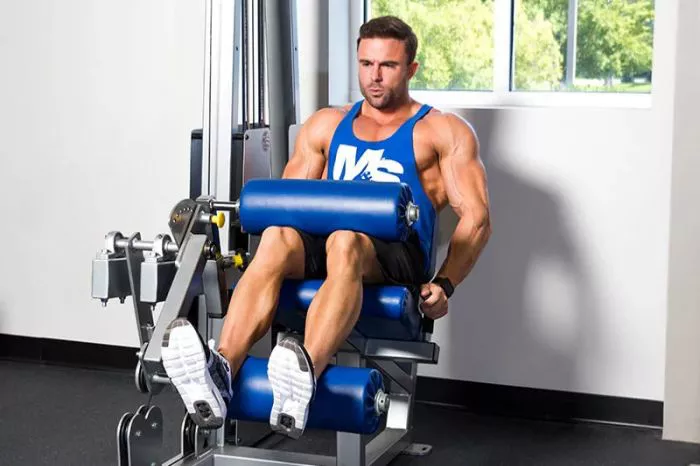The leg curl machine is a popular piece of gym equipment designed to target the muscles of the posterior thigh, primarily the hamstrings. This machine allows individuals to perform isolated leg curl exercises, which involve flexing the knee joint against resistance. While the leg curl machine is commonly used for strengthening and developing the hamstrings, its effectiveness for muscle growth depends on various factors, including exercise technique, programming variables, and individual goals. In this comprehensive exploration, we’ll delve into the benefits of the leg curl machine for leg muscle growth, its biomechanics, exercise variations, programming considerations, and practical tips for optimizing its effectiveness in your training routine.
Biomechanics of the Leg Curl Machine
The leg curl machine primarily targets the hamstrings, which are a group of muscles located on the posterior aspect of the thigh. The primary function of the hamstrings is knee flexion, which involves bending the knee joint and bringing the heel towards the buttocks. The leg curl machine allows individuals to perform knee flexion exercises in a seated or lying position, depending on the specific design of the machine.
During a leg curl exercise, the individual lies face down or sits with their knees positioned against the machine’s pads. The lower legs are secured under the pads, and the individual flexes their knees against resistance by contracting the hamstrings. The resistance is provided by a weight stack or adjustable lever arm system, allowing individuals to progressively overload the muscles and increase strength and muscle size over time.
Benefits of the Leg Curl Machine for Leg Muscle Growth
Isolation: The leg curl machine isolates the hamstrings, allowing individuals to target this muscle group without significant involvement of other lower body muscles. By isolating the hamstrings, individuals can effectively overload the muscles and stimulate muscle growth.
Muscle Activation: Research has shown that the leg curl machine elicits high levels of muscle activation in the hamstrings, particularly during the concentric (lifting) phase of the exercise. This targeted muscle activation can promote hypertrophy and strength gains in the hamstrings.
Variety of Exercise Variations: The leg curl machine offers several exercise variations to target different aspects of hamstring development. These variations include seated leg curls, lying leg curls, unilateral leg curls, and different foot positions (e.g., dorsiflexion, plantarflexion).
Safety and Convenience: The leg curl machine provides a controlled and stable environment for performing hamstring exercises, reducing the risk of injury compared to free weight exercises. It also allows individuals to adjust the resistance easily and perform the exercises with proper form, making it suitable for individuals of all fitness levels.
Programming Considerations for Leg Curl Machine Workouts
When incorporating the leg curl machine into your leg muscle growth routine, consider the following programming considerations:
Exercise Selection: Choose the appropriate leg curl machine variation based on your goals and preferences. Seated leg curls and lying leg curls primarily target the hamstrings, while unilateral variations can help address muscle imbalances and improve stability.
Repetition Range: To promote muscle growth, aim for a moderate to high repetition range, typically 8-12 repetitions per set. Adjust the resistance to ensure that you reach muscle fatigue within the desired repetition range.
Volume and Frequency: Incorporate leg curl exercises into your leg training routine 1-3 times per week, depending on your overall training volume and recovery capacity. Monitor your progress and adjust the volume and frequency as needed to avoid overtraining and optimize muscle growth.
Progressive Overload: Gradually increase the resistance, sets, or repetitions over time to progressively overload the hamstrings and stimulate muscle growth. Focus on gradual and sustainable progression to avoid plateaus and minimize the risk of injury.
Variation and Periodization: Periodically vary your leg curl workouts by changing the exercise variations, repetition ranges, tempos, and training methods. Incorporate different intensity techniques such as drop sets, rest-pause sets, and tempo variations to keep your muscles challenged and promote continuous adaptation.
Practical Tips for Optimizing Leg Curl Machine Workouts
Focus on Form and Technique: Maintain proper form and technique throughout each repetition, focusing on controlled movements and a full range of motion. Avoid using momentum or swinging the weight, and concentrate on contracting the hamstrings with each repetition.
Mind-Muscle Connection: Develop a strong mind-muscle connection by focusing on the sensation of the hamstrings contracting and stretching with each repetition. Visualize the muscles working and actively engage them throughout the exercise to maximize muscle activation and growth.
Controlled Eccentric Phase: Emphasize the eccentric (lowering) phase of the leg curl exercise, focusing on a slow and controlled descent. This eccentric loading can induce greater muscle damage and stimulate muscle growth, leading to enhanced hypertrophy and strength gains.
Include Pre-Activation Exercises: Incorporate pre-activation exercises such as glute bridges, hip thrusts, or bodyweight hamstring curls to prime the hamstrings and enhance muscle activation during leg curl exercises. These exercises can help improve neuromuscular efficiency and maximize muscle recruitment.
Monitor Progress and Adjust Accordingly: Keep track of your performance, including weights lifted, repetitions performed, and subjective measures of muscle fatigue and soreness. Use this information to assess your progress, identify areas for improvement, and make adjustments to your training program as needed.
Conclusion
In conclusion, the leg curl machine is a valuable tool for targeting the hamstrings and promoting muscle growth in the legs. By understanding the biomechanics of the leg curl exercise, leveraging its benefits, and incorporating effective programming and training strategies, you can optimize its effectiveness in your leg muscle growth routine. Whether you’re a beginner or experienced lifter, the leg curl machine offers a safe, convenient, and efficient way to strengthen and develop the hamstrings, contributing to overall lower body strength, stability, and athletic performance. Incorporate the leg curl machine into your leg training regimen with proper form, progressive overload, and variation to achieve your muscle growth goals effectively and efficiently.
Related Topics:
Which is better for muscle gain? – Full or Half Squat


